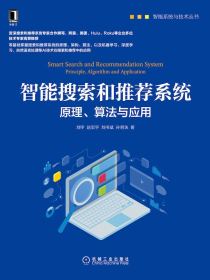内容简介
This important new edition is for graduate students studying Molecular Modelling, Computational Chemistry within Chemistry, Medicinal Chemistry and Biochemistry. Postgraduates and researchers in academia and in the chemical and pharmaceutical industries. This new edition introduces background theory and techniques of molecular modelling, also illustrates applications in studying physical, chemical and biological phenomena. It includes simple numerical examples and numerous explanatory figures and a colour plate section.
章节目录
Preface to the Second Edition
Preface to the First Edition
Symbols and Physical Constants
Acknowledgements
1 Useful Concepts in Molecular Modelling
1.1Introduction
1.2Coordinate Systems
1.3Potential Energy Surfaces
1.4Molecular Graphics
1.5Surfaces
1.6Computer Hardware and Software
1.7Units of Length and Energy
1.8The Molecular Modelling Literature
1.9The Internet
1.10Mathematical Concepts
Further Reading
References
2 An Introduction to Computational Quantum Mechanics
2.1Introduction
2.2One-electron Atoms
2.3Polyelectronic Atoms and Molecules
2.4Molecular Orbital Calculations
2.5The Hartree-Fock Equations
2.6Basis Sets
2.7Calculating Molecular Properties Using ab initio Quantum Mechanics
2.8Approximate Molecular Orbital Theories
2.9Semi-empirical Methods
2.10Hiickel Theory
2.11Performance of Semi-empirical Methods
Appendix 2.1Some Common Acronyms Used in Computational Quantum Chemistry
Further Reading
References
3 Advanced ab initio Methods, Density Functional Theory and Solid-state Quantum Mechanics
3.1Introduction
3.2Open-shell Systems
3.3Electron Correlation
3.4Practical Considerations When Performing ab initio Calculations
3.5Energy Component Analysis
3.6Valence Bond Theories
3.7Density Functional Theory
3.8Quantum Mechanical Methods for Studying the Solid State
3.9The Future Role of Quantum Mechanics: Theory and Experiment
Working Together
Appendix 3.1Alternative Expression for a Wavefunction Satisfying Bloch Function
Further Reading
References
4 Empirical Force Field Models: Molecular Mechanics
4.1Introduction
4.2Some General Features of Molecular Mechanics Force Fields
4.3Bond Stretching
4.4Angle Bending
4.5Torsional Terms
4.6Improper Torsions and Out-of-plane Bending Motions
4.7Cross Terms: Class 1, 2 and 3 Force Fields
4.8Introduction to Non-bonded Interactions
4.9Electrostatic Interactions
4.10Van der Waals Interactions
4.11Many-body Effects in Empirical Potentials
4.12Effective Pair Potentials
4.13Hydrogen Bonding in Molecular Mechanics
4.14Force Field Models for the Simulation of Liquid Water
4.15United Atom Force Fields and Reduced Representations
4.16Derivatives of the Molecular Mechanics Energy Function
4.17Calculating Thermodynamic Properties Using a Force Field
4.18Force Field Parametrisation
4.19Transferability of Force Field Parameters
4.20The Treatment of Delocalised 7r Systems
4.21Force Fields for Inorganic Molecules
4.22Force Fields for Solid-state Systems
4.23Empirical Potentials for Metals and Semiconductors
Appendix 4.1The Interaction Between Two Drude Molecules
Further Reading
References
5 Energy Minimisation and Related Methods for Exploring the Energy Surface
6 Computer Simulation Methods
7 Molecular Dynamics Simulation Methods
8 Monte Carlo Simulation Methods
9 Conformational Analysis
10 Protein Structure Prediction,Sequence Analysis and Protein Folding
11 Four Challenges in Molecular Modelling Free Energies,Solvation,Reactions and Solid-state Defects
12 The Use of Molecular Modeling and Chemoinformatics to Discover and Design New Molecules
Index
分子模拟的原理和应用英文版是2003年由世界图书出版公司出版,作者A.R.Leach。
得书感谢您对《分子模拟的原理和应用英文版》关注和支持,如本书内容有不良信息或侵权等情形的,请联系本网站。

















